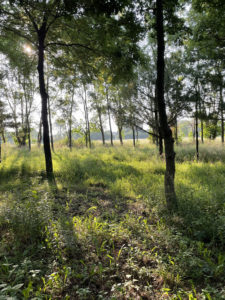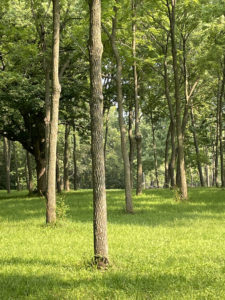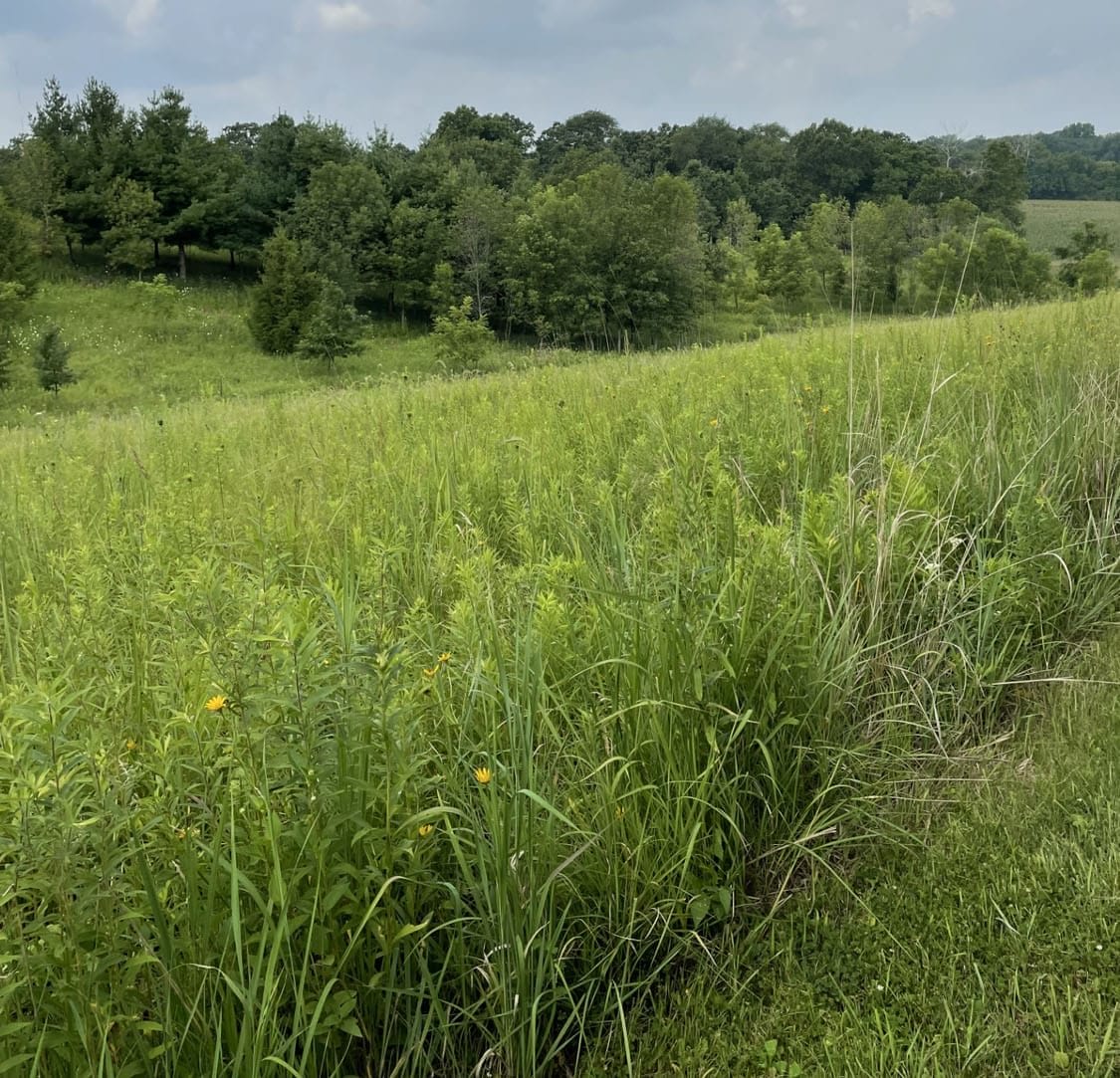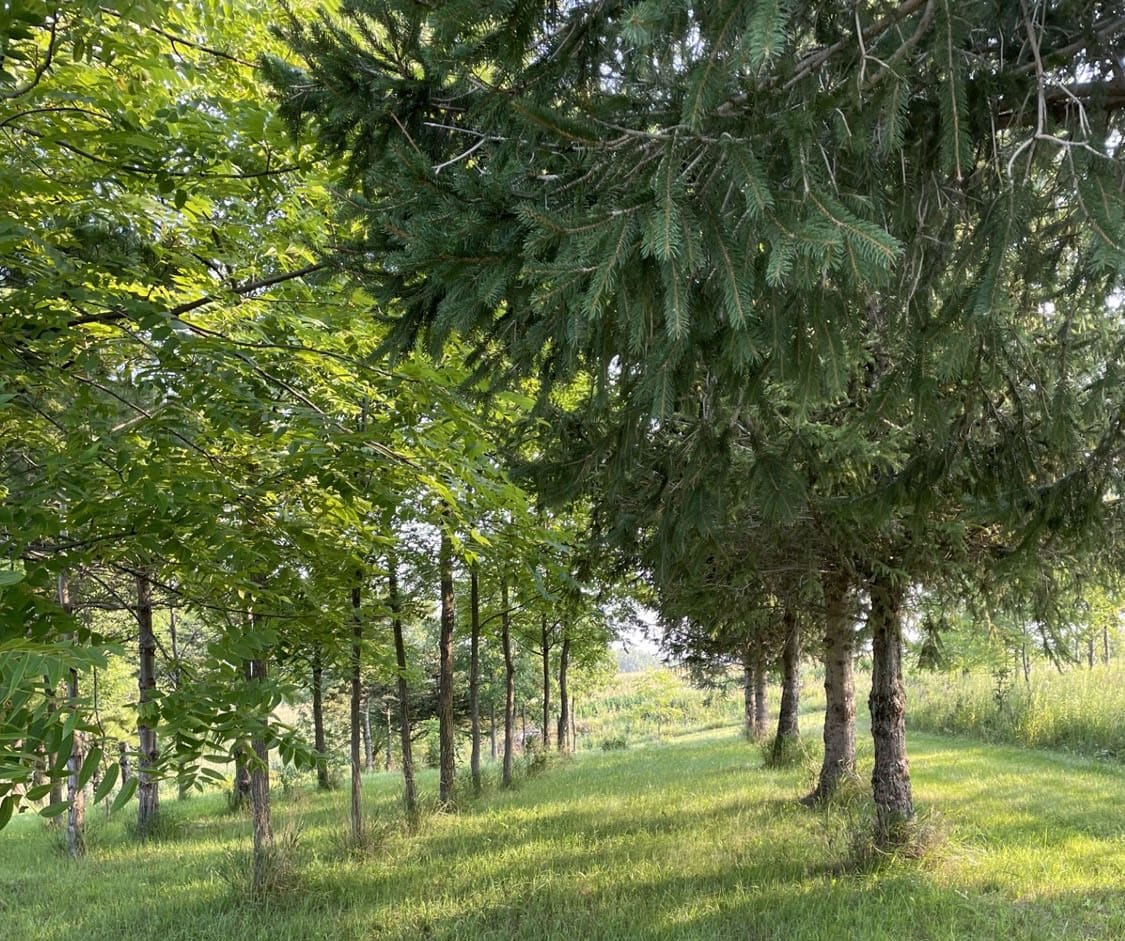Creating a Woodland Oasis for Wildlife in Eastern Iowa
 PFI Member Mark Smith is proud of the twelve acres of trees he has planted on his farm in Scott County, Iowa. When Mark purchased the land in 1993, it was already a partial tree farm, but most of it was in corn and soybeans. However, the land was proving very erodible, and Mark began to wonder what else he could do to stabilize the soil on the 27-acre farm.
PFI Member Mark Smith is proud of the twelve acres of trees he has planted on his farm in Scott County, Iowa. When Mark purchased the land in 1993, it was already a partial tree farm, but most of it was in corn and soybeans. However, the land was proving very erodible, and Mark began to wonder what else he could do to stabilize the soil on the 27-acre farm.
“After I built the house in ’96, I rented 7 acres out to a corn and soybean farmer, but it wasn’t highly successful. The areas being farmed were constantly losing topsoil, so I began planting prairie grasses and decided to focus on conservation instead and how to make that feasible.”
Transitioning From Farm Fields to Trees
Working with Pheasants Forever and his kids, Mark began to plan out how to work his acreage into sustainable habitat. Together, they studied soil maps and dug into the history of the land. Mark learned that the original property had once been primarily natural tree growth but had been completely clear-cut in the late 1930’s and early 1940’s to make room for agricultural purposes. Additionally, the area had originally been very stony, and dynamite had been used to break up the large rocks embedded in the soil, which only enhanced the instability of the topsoil. Since putting in prairie grass, Mark has noticed a vast improvement in soil retention and quality.
“Taking it out of corn production really was the best thing for that land. Of course, I had a career outside the farm, so it wasn’t the sole source of my livelihood, and once the kids were grown, I really had time to focus on creating that habitat oasis that the family wanted. I did a lot of research, and the one thing that I learned was that diversity is key in habitat restoration. Diversity can withstand disease or other hardships like drought better. That’s the biggest piece of advice I could give to someone considering this.”
 Mark had originally planted all ash on a third of his acreage, but the onset of the emerald ash borer proved how important diversity was in the establishment of habitat. Now, his farm boasts a multitude of tree species, all interplanted on the property or in windbreaks around the house. Now, a full twelve acres of the property is in trees, with species including ash, white pine, white spruce, pin oak, white oak, ninebark and chestnut.
Mark had originally planted all ash on a third of his acreage, but the onset of the emerald ash borer proved how important diversity was in the establishment of habitat. Now, his farm boasts a multitude of tree species, all interplanted on the property or in windbreaks around the house. Now, a full twelve acres of the property is in trees, with species including ash, white pine, white spruce, pin oak, white oak, ninebark and chestnut.
“It took over three years to really establish the trees,” Mark said. “I could have just let it go into grassland and planted alfalfa to restore nitrogen into the soil, but part of the reason I wanted to do this originally was the sense of serenity I could get from this. I was a lawyer for 23 years and a judge for a further 26. I just wanted to take my time and do it correctly!”
When Mark was first planting his trees, he used tree shelters to protect their growth and raised the shelters a bit off the ground to allow some airflow. Overall, he has had a 95% survivability rate among all his trees. For some of his plots, especially those grouped closer together out of topographical necessity, tree shelters were not always possible. However, those areas still boast a 75-80% survival rate. Mark also had to contend with Oak Tatters throughout the years, but most of his trees have pulled through and are beginning to reach their mature heights.
Habitat Hurdles and Revivals
The biggest hurdle Mark had to contend with was controlling the invasive species. “We didn’t do any burning, because originally this was still mostly corn and beans,” Mark said. “If I was going to do this over, I’d make sure that I had the ability to mow in between the trees by spacing them a little further apart, rather than having to hand pull, which is what I often did. I did put my walnut trees in 12-foot spacing, but most others were put in 6-foot spacing, and it was nearly impossible to get the big mowers through, but I have no regrets overall.”
“My career in law involved a lot of paper shuffling and being indoors. Planting trees gives a great feeling of giving back. I’ve still got another 25 bushes and more trees coming from an Ames nursery that I’m going to plant as wildlife cover, and it’s my kids and grandkids that will see the fruits of the labor,” Mark said. “They can also make it profitable with timber harvesting, chestnut collection, of course, the land itself. But they will also have that wildlife and the beauty that comes with it.”
Wildlife has certainly made a comeback to Mark’s acreage. He frequently spots eagles, deer, migratory birds, pheasant, quail, owls and bats on his land. “I’ve fed the deer with cranberries, put up bird and bat houses on the trees to create even more places for them, although the squirrels definitely evicted some of them! I’d say overall, I’ve succeeded in what I set out to do, creating a peaceful home for myself, my family and nature.”
Resources Available to Assist With On-Farm Habitat Creation
Practical Farmers of Iowa has a habitat incentives program to help you implement conservation practices that improve water quality, build soil health and provide critical habitat for native wildlife. Also, check out the various soil health and habitat programs offered by our partners over at Pheasants Forever.


